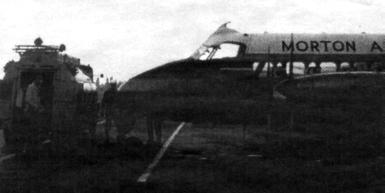Croydon Aerodrome - Dramatic History
As 1941 opened, Croydon and Wallington were still essentially pleasant residential suburbs.
Some advertisements in the local press were similar to those of three decades earlier, but times had definitely changed and other advertisements were laying emphasis on the facilities available during the air-raids, which were now a feature of life. This was a nation at war.

People were learning for instance, the penalties for disobeying the many restrictions that now surrounded their lives, and which were the result of 18 months of war against Nazi Germany.
The Wellington and Carshalton Advertiser on January 16 noted a resident of Buckingham Way in Wallington was fined £5 (a large sum in those days) at Croydon County Court for failing to observe the blackout regulations. Buckingham Way was an ordinary suburban road, but it lay very near to Croydon Aerodrome.
At the beginning of 1941 Croydon Aerodrome was still a Royal Air Force fighter command base. It had played a major part in the Battle of Britain, just ended. No one knew what was coming next in the war, but air battles had become identified in the public mind as central to victory.
Locally, the aerodrome, already famous for its pre-war role as a centre of international travel, was a source of great pride.
Naturally, squadron changes at the aerodrome were kept secret, as were all operational developments of the armed forces. But, in fact, 1941 was to see the start of a new era at the aerodrome as the Battle of Britain was over and won.
At the end of 1940 air marshal Sholto Douglas, the new commander in chief of the fighter command, had come to Croydon to talk about the new role for 605 squadron with the Hurricane IIA.
This machine was fitted with the Rolls Royce Merlin XX two-stage supercharged engine and was to prove popular with pilots.
The squadron had "working-up exercises" and once at full operational status in February 1941 it was moved to Martlesham, near Ipswich.
This move marked a major change for Croydon Aerodrome because 605 had been a central part of Croydon's life since the height of the Battle of Britain in September 1940.
